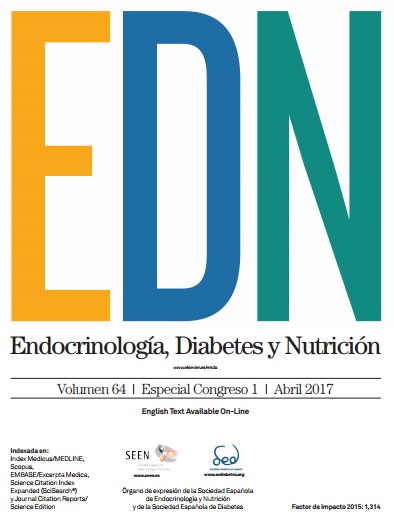O-022 - Levothyroxine blunts the onset of experimental type 1 diabetes mellitus in mice
Centro Andaluz de Biología Molecular y Medicina Regenerativa, Sevilla.
Objectives: Levothyroxine (T4) has been shown to improve insulin sensitivity, increase insulin biosynthesis as well as to promote β-cell proliferation and maturation. In view of these anti-diabetic effects, we sought to investigate whether T4 supplementation could blunt the onset of hyperglycemia in the RIP-B7.1 mouse model of experimental autoimmune diabetes (EAD).
Material and methods: RIP-B7.1 mice were treated or not with T4 (5 μg/ml in the drinking water) starting at 6-weeks of age. RIP-B7.1 mice were immunized (IMM) at 8-weeks of age with a DNA plasmid encoding the preproinsulin (PPINS) to trigger EAD. Body weight and blood glucose levels were monitored weekly. Oral glucose tolerance test (OGTT) and insulin tolerance test (ITT) were performed at 4 and 5 weeks of T4 treatment. Mice were sacrificed at 11 weeks, organs weight was measured and pancreases were extracted for immunohystological analyses (insulin, glucagon, Ki67 and TUNEL).
Results: Levothyroxine treatment decreased postpandrial glucose levels as compared to untreated and IMM mice starting at 3 weeks of T4-treatment. Immunized RIP-B7.1 developed hyperglycaemia at 5-weeks of treatment while T4-treated and IMM RIP-B7.1 mice remained normoglycemic. Immunized RIP-B7.1 mice treated with T4 exhibited lower circulating glucose during the OGTT, and ITT as compared to untreated animals. At the time of sacrifice the weight of several organs was higher in mice exposed to T4. Insulin expression as well as β-cell proliferation was increased in IMM and T4-treated RIP-B7.1 mice. In contrast, β-cell apoptosis was similar in T4-treated and untreated RIP-B7.1 mice.
Conclusions: Our data indicates that T4 supplementation efficiently blunts the onset of experimental type 1 Diabetes Mellitus in the RIP-B7.1 model. We propose that, although the use of T4 may cause side effects, interventions based on the use of T4 or safe thyromimetics could represent a promising strategy for the development of novel therapies for the treatment of T1DM.
Funding: This work was funded by grants from the Ministerio de Economía y Competitividad, Instituto de Salud Carlos III co-funded by Fondos FEDER (PI13/00593 to B.R.G) and (CP14/00105 and PI15/00134 to A.M-M) from the Instituto de Salud Carlos III co-funded by Instituto de Salud Carlos III and FEDER.







